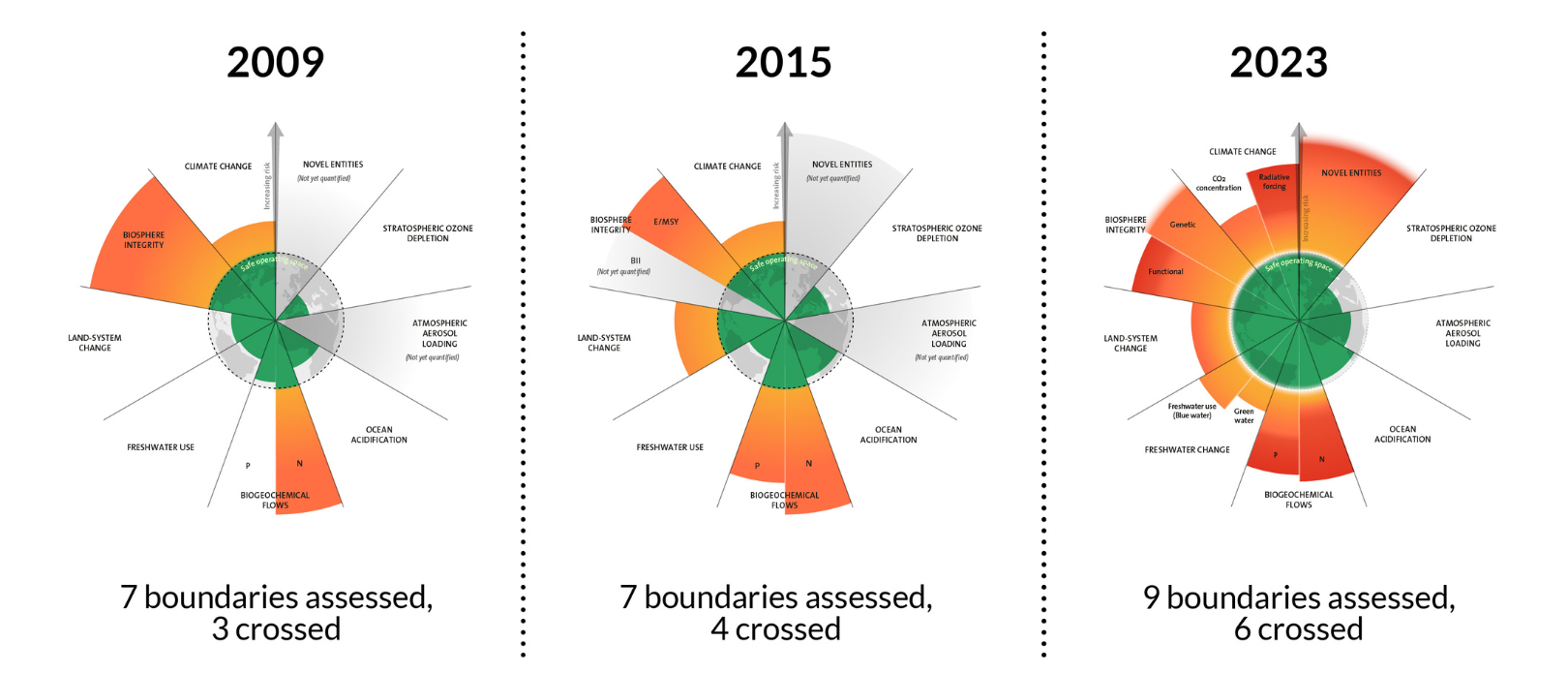The purpose of this repository is to organize and present ideas on how to prevent sudden, irreversible changes in Earth's biosphere that could significantly degrade the planet's life-supporting capabilities.
The original submitter of this repository believes this issue is urgent.
The most suitable theoretical framework for this work currently identified is the "Planetary Boundaries" concept from the Stockholm Resilience Centre and the Australian National University. (Suggestions for improvement are welcome)
Let us examine the most urgent issues:
As a result of extensive cultivation of legumes (particularly soy, alfalfa, and clover), growing use of the Haber–Bosch process in the production of chemical fertilizers, and pollution emitted by vehicles and industrial plants, human beings have more than doubled the annual transfer of nitrogen into biologically available forms.
Source: Wikipedia, Nitrogen cycle, Human influences on the nitrogen cycle
Increasing levels of nitrogen deposition are shown to have a number of negative effects on both terrestrial and aquatic ecosystems.
Source: Wikipedia, Nitrogen cycle, Impacts on natural systems
TODO: The original submitter of this repository does not understand planetary nitrogen cycle at all and neither why it is considered by Planetary Boundaries Framework as the most urgent issue. Help is needed here.
Excess radiative forcing refers to the imbalance between the energy Earth receives from the Sun and the energy it radiates back into space. This imbalance is primarily driven by human activities, particularly the emission of greenhouse gases like carbon dioxide (CO2), methane (CH4), and nitrous oxide (N2O), which trap heat in the atmosphere.
It is likely that the world could reach or exceed the +1.5°C threshold sometime between the early 2030s and the early 2040s, if current emission trajectories continue.
Crossing a +1.5°C anomaly in global temperature relative to pre-industrial levels is a critical threshold in the context of climate change and tipping points. Tipping points refer to thresholds in the Earth’s climate system that, once crossed, could lead to significant and potentially irreversible changes in the environment. These changes could have cascading effects, leading to further warming and destabilization of the climate system.
TODO: The World in Data, what drives excess radiative forcing
TODO: The World in Data, CO2 per sector
We have no time to build nuclear, we have to act fast.
TODO: Get, read and summarize here the article Clean energy’s next trillion-dollar business from Economist.com.
